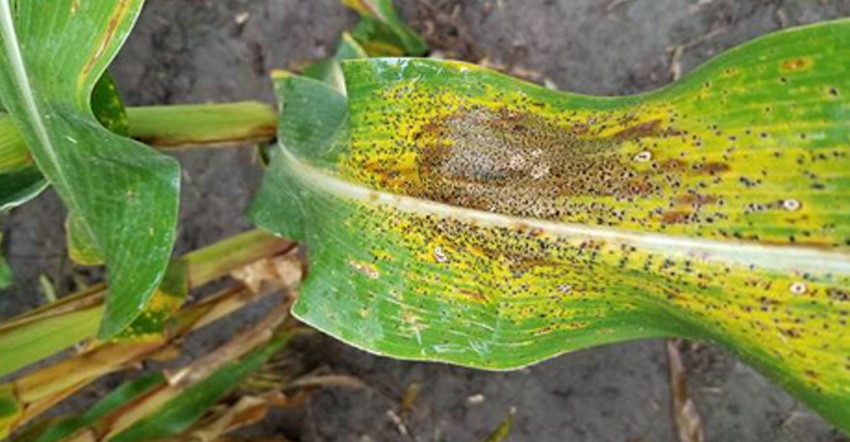
Agronomists say Wisconsin had ideal corn growing weather this summer, which means there is little or no tar spot present this year.
Tar spot originated in Central America. It was identified in northern Illinois and Indiana in 2015, according to Nathan Falk, technical agronomist with Channel Seeds. Since then, it’s been confirmed in four additional states: Wisconsin, Iowa, Michigan and Florida.
“It first showed up in Wisconsin in 2016, mostly in the southwest corner of the state,” Falk says. “It really took off in 2018. It spread across the southern half of the state and the eastern half of the state south of Green Bay.”
What is tar spot?
As the names implies, tar spot looks like small dark spots of tar on corn leaves. These spots are called ascomatum (fungal fruiting structures).
“The disease favors cooler temperatures,” Falk explains. “Tar spot likes 60- to 70-degree-F temperatures during July and August. We didn’t see much tar spot this year because temperatures were mostly in the 80s this summer, and the humidity was low throughout Wisconsin most of the summer. Tar spot thrives in cooler temperatures and humid conditions. It favors heavy dews and foggy conditions.”
But Falk says tar spot can happen anytime. “University of Wisconsin researchers have seen tar spot when the corn is at the V5 stage, but usually it’s more common in August,” he says.
Falk says it’s nice not to see much tar spot this year. “It’s out there, but it’s not causing any yield damage,” he says. “We’re not seeing a lot of it. In 2018, we saw up to 50-bushel yield losses in parts of Wisconsin.”

UNFAVORABLE CONDITIONS: “We didn’t see much tar spot this year because temperatures were mostly in the 80s this summer, and the humidity was low throughout Wisconsin most of the summer,” says Nathan Falk, technical agronomist with Channel Seeds.
Tar spot may be challenging to control with a single fungicide spray application due to its rapid reinfection cycle.
“Fungicides like Delaro and Trivapro help control tar spot when sprayed at the brown silk stage, usually in August,” Falk says. “[Fungicide] controls tar spot or prevents it from happening. If you see it coming in on your corn, that’s the time to spray.”
Falk notes that tar spot overwinters in crop residue. Once you spot this disease in your fields, the chances of seeing it again are pretty good if temperatures are cool and it’s humid.
“Residue management is needed to reduce the amount of inoculant to use,” he explains. “Rotating your crop from corn to soybeans next year helps, too.”
Standability is of the greatest concern at this point in the season, Falk notes. “If tar spot shows up this fall, the biggest thing for growers is to evaluate cornstalk health, and get the crop out of the field as early as possible,” he says.
Falk suggests growers spend time evaluating their fields this fall for plant health and stalk quality. He also says every grower should become familiar with what this disease looks like. “It’s here, and it’s not going away,” Falk says.
About the Author(s)
You May Also Like






